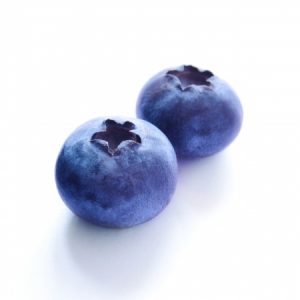
Americans are notorious consumers of sugar and sweet-tasting foods and beverages.
We have developed a relentless sweet tooth and a severe addiction to sweetness,” states Joan Gussow, Ed.D., Professor of Nutrition and Education at Columbia Teachers College, Columbia University, New York.
According to the U.S. Department of Agriculture statistics on the amount of caloric sweeteners used in modern foods, there has been an increase of added sugars of more than 16 % per person over the past two decades, and more than half of the increase has occurred since 2000.
Added Sweeteners
Added sweeteners include:
- Sugar
- High-fructose corn syrup
- Pure honey
- Edible syrups
Paul Lachance, Chairman of the Department of Food Science at Rutgers University in New Jersey, estimates that, based on a 2,000-calorie-a-day diet, the average American consumes about 300 calories from sugars added to foods.
That adds up to nearly 14 teaspoons of table sugar per person a day.
Dr. Gussow has her own theory why sugar has become so prominent in the American diet.
It’s for taste,” she says. “I grow my own vegetables and fruit. And when I pick, cook and eat my parsnips, for example, they are as sweet as sugar.”
Sugar Turns Into Starch

So, why is sugar so prominent in our modern diet?
When food is shipped and stored, it can get old, turning its natural sugar into starch. It loses its natural sweetness; so many times sugar is added to restore the sweet flavor.
If people eat increasingly larger quantities of … sweeteners in general,” writes Jane Hurley, Associate Nutritionist at the Center for Science in the Public Interest (CSPI), Washington, D.C, “these can compete with and crowd out other nutrients. People are better off having an apple as a snack than a candy bar.”
Research shows that human beings have an inborn desire for sweets, one of the four fundamental taste sensations.
Newborn infants have been observed to react positively to sweetness. Studies demonstrate that the response to sweets is an involuntary, reflex reaction rather than a learned response.
But “sweeteners” are a manmade concept. Humans have always strived to make things “better”, and since the sensation of sweetness is the most pleasurable of the taste sensations, products that are sweet – sell!
A Sweet Example
Consider a box of cereal. One reason it has so much added sugar is because it’s been processed to the point that it doesn’t taste good without it.
An organic box of cereal needs less – to no – added sweetening because the natural sugars in the grain are enough – if you let it be, that is.
Back In The Day
Honey and fruits were originally the main sources for satisfying our “sweet” tastes. However, since it was first refined some 600 years ago, refined table sugar (sucrose) has been the standard for sweetness in packaged foods.
Until recent decades, sucrose was the only sweetener in general use. Now, artificial sugars are added to this mess.
By the turn of the twenty-first century, the USDA recorded 75 pounds of sugar from sugar cane and sugar beets, 86 pounds of sugar from corn sweeteners, and one pound of other natural sweeteners such as honey and maple syrup were delivered (per capita) into the American food supply.
That adds up to a total carbohydrate sweetener availability of around 154 pounds per person.
The sugar to watch out for is the 86 pounds of corn syrup, which climbed from zero consumption in 1966 to 62.6 pounds per person in 2001.
Whoa.

Alternatives
Numerous nutritive and nonnutritive substitutes for sugar compete for its place in the market as a sweetener.
The most popular nutritive substitutes are:
- Honey
- Concentrated fruit juices
- Dextrose (also known as glucose)
- Maple and corn syrups
- Fructose (fruit sugar)
- Sugar alcohols
- High-fructose corn syrup
Natural sweetness comes from the following sugars:
- Glucose – sometimes called blood sugar or dextrose
- Fructose – a simple sugar found naturally in fruits and honey
- Lactose – also known as milk sugar
- Maltose – the sugar found naturally in sprouted grain
- Sucrose – a mix of glucose and fructose
But most sweeteners on the market today are highly processed and refined, bearing no resemblance to their natural counterparts listed above. Before natural sugars are refined and bleached into white sugar, they are rich in vitamins and minerals; after processing, these products are void of nutrients.

When consumed as a “processed” form, simple sugars derived from glucose, fructose, and sucrose cause rapid rises in blood sugar levels – a sugar high – followed by a drastic plunge – a sugar low.
Refined sugars – white and brown – are not nutritious substitutes for natural sweeteners.
Eat mostly fresh and raw when you can – this helps avoid added refined sugars found in processed foods.
From my book Splenda®: Is It Safe Or Not?
_____________
If you want to learn more about the sweeteners, contact me at janethull.com. Remember that you are never alone when you are looking for good health!
Gain access to all of my online programs, ongoing support, monthly Q&A, and more by joining my Private Inner Circle Membership Program. I look forward to supporting you on your journey to alternative health and wellness.
_____________
Disclaimer: This article is for informational purposes only, and is educational in nature. The FDA may not have evaluated some of the statements. This article is not intended to diagnose, treat, cure, or prevent any disease. Please discuss with your own, qualified health care provider before adding supplements or making any changes to your dietary program.
Before taking vitamins, consult your doctor; pre-existing medical conditions or medications you are taking can affect how your body responds to multivitamins.
You have our permission to reprint this article if you attribute us with a live back-link to this article and the youtube links. https://janethull.com/